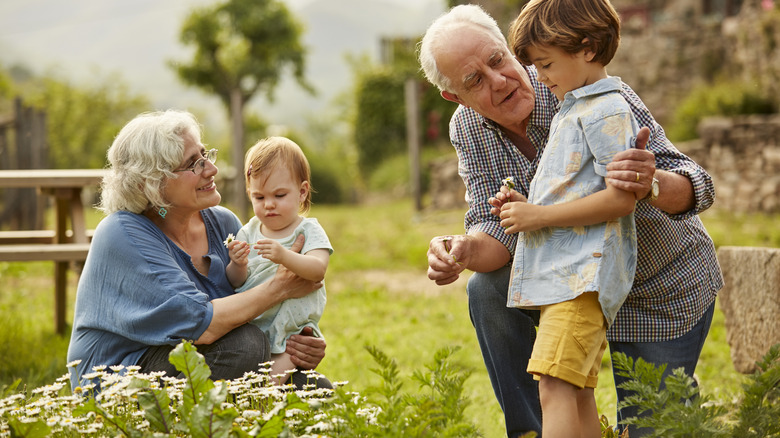Our Occupational Therapist And Landscape Designer Shares Tips On Setting Up A Sensory-Friendly Garden
Sensory gardens are popping up in many places, including botanical gardens, hospitals, and other organizations whose purpose is helping people. Amy Wagenfeld, PhD, OTR/L, SCEM, FAOTA spoke exclusively with House Blog to share her expertise as an occupational therapist and landscape designer specializing in healthcare garden design. Her experience makes her uniquely qualified to share tips for creating a sensory garden in a home outdoor space.
There are several considerations when planning a sensory garden, but there's no single "right way," according to Dr. Wagenfeld. "First and foremost, home sensory garden design is a highly personalized process." Your sensory-friendly outdoor space should fit your family's particular needs by supporting eight sensory systems: the external senses — taste, smell, touch, hearing, and seeing — and the internal senses, including the awareness of one's body in space, motion, and internal regulation.
Each sensory garden will be as unique as the person enjoying it, with features that can offer exciting spots to climb or swing, quiet areas to calm the mind, or perhaps a bit of both. While Dr. Wagenfeld's tips are focused on supporting neurodiverse family members, a sensory garden is also wonderful for those who could benefit from gardening for their mental health.
Selecting plants for a sensory garden
Although the specific elements in your sensory garden are highly personalized, there are a few features every space needs. In this exclusive interview with House Blog, Dr. Wagenfeld states, "No matter whether your sensory garden is designed to be activated, calm, or a combination of both, it is very important to include shade and places to sit to support internal regulation and keep us grounded." When asked if there are specific plants she would recommend for a sensory garden, Dr. Wagenfeld replied, "This is a highly personal choice and depends on you or your child's sensory preferences and tolerances for texture, smell, and color as well, hardiness in your planting zone, and your commitment to care for the plants."
As you plan your sensory garden, make sure you avoid anything prickly or with thorns. Since taste is part of this experience, Dr. Wagenfeld suggests checking each plant with the Texas A&M University Common Poisonous Plants and Plant Parts website to ensure they are edible. For allergy concerns, she recommends the book "Allergy-Free Gardening: The Revolutionary Guide to Healthy Landscaping" by Thomas Leo Ogren.
Other elements for your outdoor space
Even though it's called a garden this outdoor sensory-packed experience includes much more than plants. Speaking exclusively with House Blog, Dr. Wagenfeld recommends first considering what your family member enjoys, and working in those elements to enhance the outdoor space. "Let's say it is playing in mud. You could have a series of buckets full of mud in your sensory garden, which is great. The buckets could be of different colors, textures, and sizes to vary the visual, tactile, and motor experiences of looking at, filling, and emptying them. You could also have an entire garden bed within the garden devoted to mud play. No plants, just mud to dig in, hide things in and find them, and maybe to sit or roll around in... the sky is the limit!"
Creating a sensory garden is a project the whole family can enjoy. From selecting the most interesting plants to creating fun nooks and activities, this is a group effort that includes everyone while creating a safe outdoor space perfect for your family's specific needs. Dr. Wagenfeld is currently writing a book on this important topic with a colleague about "sensory garden design and why everyone can benefit from them!" We can't wait to read it.


